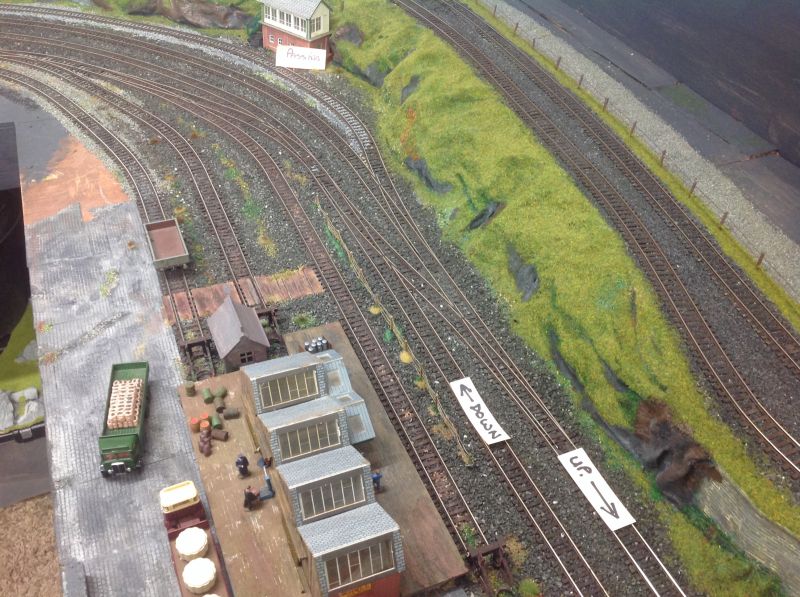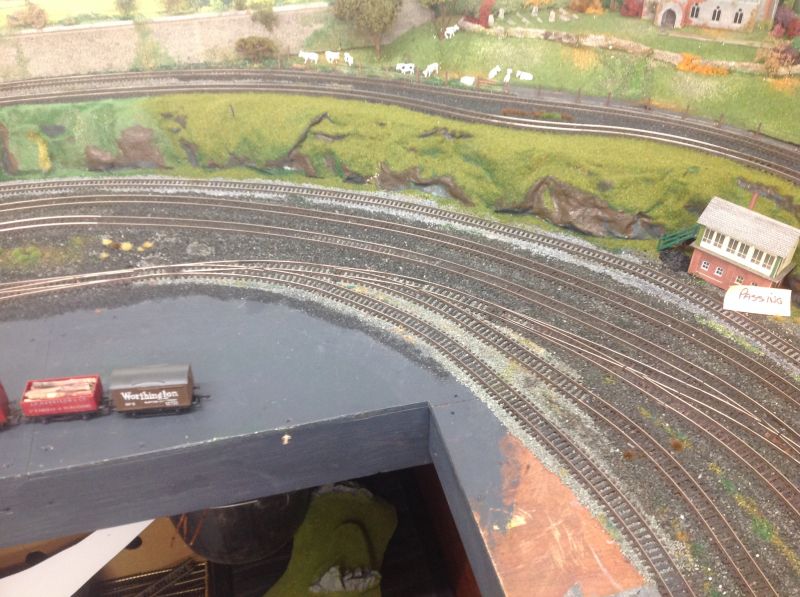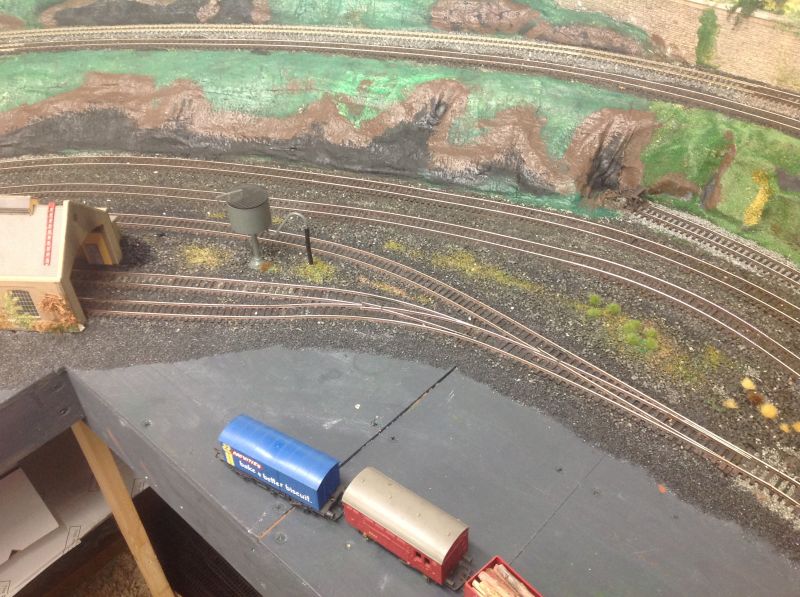Goods yard refresh.
Posted
#256903
(In Topic #14049)
Full Member
Trackplan ideas.
Hello everyoneWell I'm in need of some advice and perhaps suggestions too improve on the goods yard as it currently is. To be honest I've just added bits here and there without too much thought 🤦â€â™‚ï¸to actual operability and I'm now looking to either adapt what is already in place , or remove it completely and start afresh.
I'm not too limited for space and would be able to expand a bit .
I want to have a busy yard with plenty buildings / functions and character about the place. It's the track layout that gets me as I'm never sure if it would actually work in real life.
My main interest is in the modelling side so a fresh start to the yard doesn't phase me.
If anyone has any ideas for a goods yard etc I would appreciate it.
Many thank, stay safe . ðŸ‘ðŸ»





Tickety Boo.
Posted
Full Member
I'm making assumptions here as to what you are trying to model. I'll write from the understanding that you want to have a local yard, serving industries at the station. If I'm wrong let me know. However the type of operations I'll describe can be applied to the marshalling yard as to the local or industry yard.
Yard operations
This is all about getting trains into, and out of, the yard in the shortest time possible, whilst being able to drop off and pick up loads and empties for movement back to the nearest industry, local or marshalling yard. In addition, yard operations want to make sure that they do not interfere with the main lines. This ensures that trains on the main can carry on at speed without having to worry about locomotives and cars being left on the main. Additionally they allow the signallers to concentrate on the passage of through traffic, while the shunting goes on protected from the main line.
I'm going to use your industry in the first picture for the example yard design below. It will be located in between the industry one and two tracks. Additionally, both of these tracks are stone flagged, concreted or covered in tarmac to allow those interested in unloading or loading their own trucks (commonly called in US parlance a Team Track).

I'll go through each of the different tracks describing why I think they're important for any functional yard design.
- Arrival / Departure (A/D)
- Upon arrival at the station, the freight train is moved onto the A/D track.
- This clears the mainline, and allows the train crew to prepare to begin shunting.
- Shunting Neck
- This track, the same length as the A/D track, allows the entire train to be shunted without fouling the main.
- It is important that the shunting neck allows the whole train (including loco and good van) to be pulled onto this track. This speeds up the switching operation (for railway companies this was critical) and ensures that you can switch the train as one item, instead of trying to cherry pick specific cars from within the train.
- Loco Relief
- This track allows your locomotive to run around the train on departure or arrival should the locomotive be on the wrong end of the train before beginning shunting. This track can be used for short term truck accommodation once shunting begins.
- It must be left clear before departure.
- Classification tracks
- I've included 3 tracks, but you can (depending on the size of your yard) to get away with as little as one.
- These tracks allow trucks to be stored for later shunting into the industry should they either not be required, or not be able to fit into the industry at the time.
- In addition, they allow the train crew to 'block' the outgoing cars in station order, should they be stopping along the way. This also speeds up your time at each station.
- Industry tracks
- Not much to say here. These, in your case, are for the building and for open unloading of trucks.
- They do allow you a lot of leeway however, for shunting. As often, there will be trucks in the depths of the siding that need to be pulled (either empty or loaded) and replaced with newer trucks.
- Each truck spot on the siding too can be an industry in itself, or in the case of the industry building simply one spot among many.
I can suggest these two books specifically for you as reading material (click the links to go to my personal library website):
Both are excellent books in regard to operations and specifically UK prototype practice.
They are still available. Though can be hard to find sometimes.
Hope that this can be of help to you in your redesign.
Regards;
Andrew Martin
Small Operating Layout Designs (since 2003)
Modelling pages
Modelling – The Martin Family
Small Operating Layout Designs (since 2003)
Modelling pages
Modelling – The Martin Family
Posted
Full Member
Many thanks
Tickety Boo.
Posted
Full Member
No problems. Glad to be able to give back.
Andrew Martin
Small Operating Layout Designs (since 2003)
Modelling pages
Modelling – The Martin Family
Small Operating Layout Designs (since 2003)
Modelling pages
Modelling – The Martin Family
1 guest and 0 members have just viewed this.

